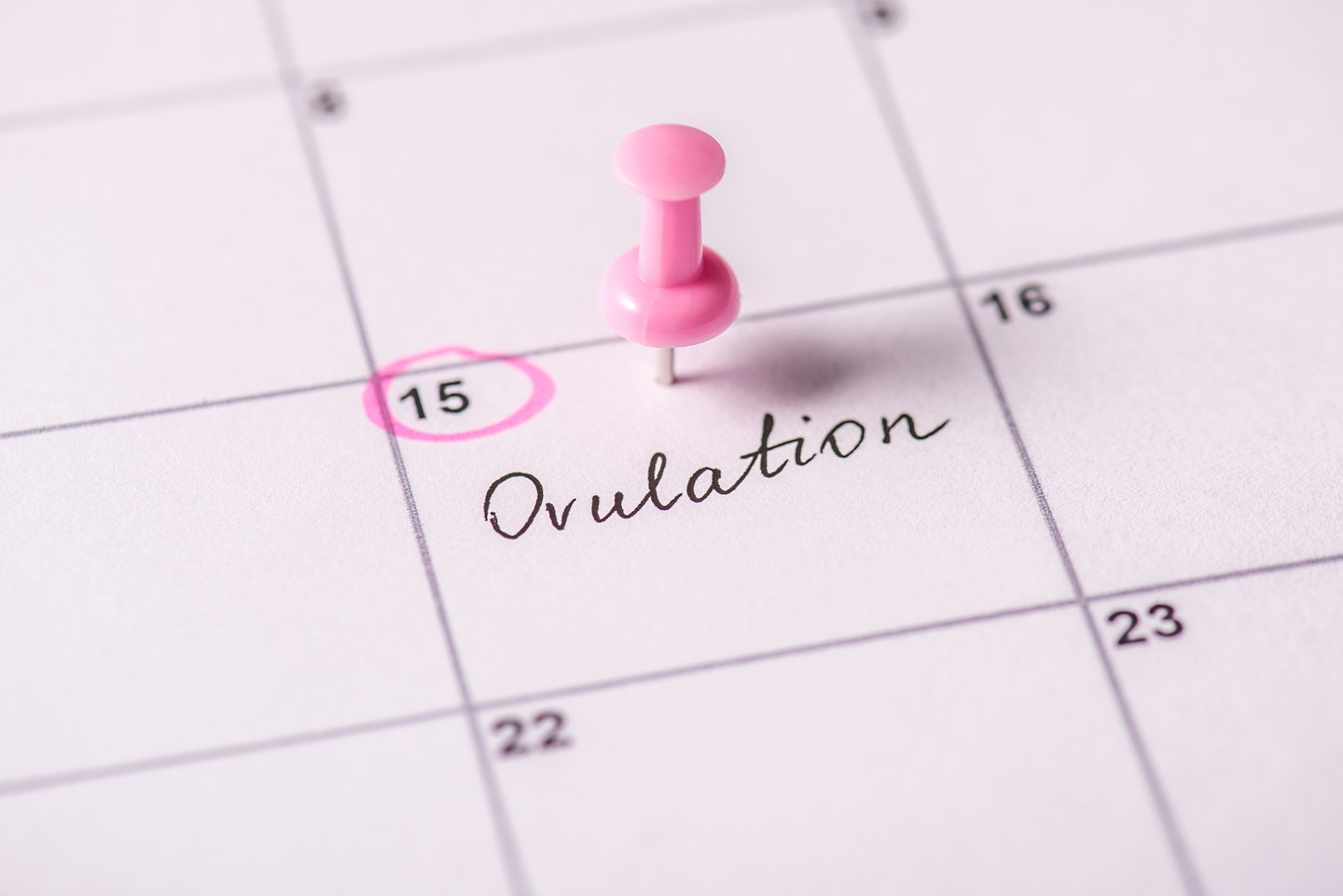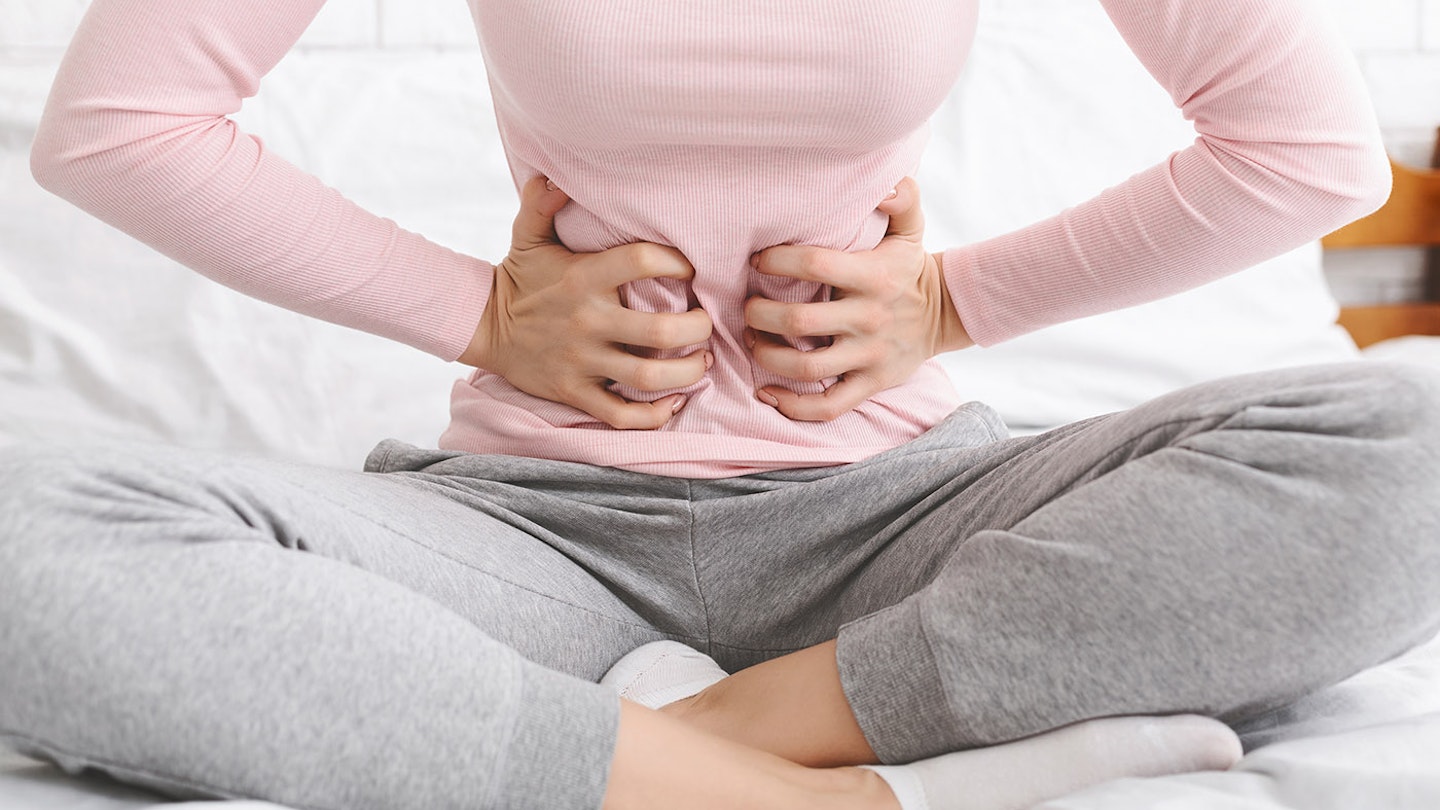If you’re trying to get pregnant then knowing the different ovulation symptoms can be useful. Ovulation is when an egg is released from your ovaries and travels into your fallopian tube, ready to meet sperm to become fertilised so that you can (hopefully) fall pregnant.
There’s lots of ways you can track ovulation, from an ovulation calculator to using ovulation test kits, as well as understanding the different ovulation symptoms to look out for. We spoke to Beth Kitt, NHS Midwife and founder of Bump to Baby Chapter to find out what they are.

Ovulation signs and symptoms to look out for
Change in vaginal discharge
“Just before ovulation your cervix goes clear and stretchy, like egg white. This discharge makes it easier for the sperm to reach the egg. Track your discharge throughout your cycle to get to know the changes,” advises Beth
Feeling sexy and higher sex drive
“At certain times of the month you may find that you’re more attracted to your partner than others, you may feel more confident in yourself and also have a higher sex drive,” says Beth. “ It’s these feelings have helped the human race survive and it’s our bodies way of telling us that it’s a good time of the month to have sex to get pregnant.”
Temperature rises
Your basal body temperature is the temperature your body is at while resting. This increases slightly after ovulation occurs due to progesterone levels rising in your body. If you track your body temperature using a basal body thermometer, you’ll be able to tell if you’ve ovulated.
Headaches
When the body ovulates, oestrogen increases and the luteinizing hormone surges, indicating the release of the egg from the ovary. For many women, this drastic increase and then decrease in oestrogen can trigger ovulation headaches and migraines.
Cervix position
During ovulation your cervix will change position. Beth says to think ‘SHOW’ - ‘soft’, ‘high’, ‘open’ and ‘wet’.
“Your cervix is soft, high in the vagina, open and wet to allow sperm to enter the uterus,” she says. “About 1-2 days after ovulation, your uterus will drop and become firmer. If you are pregnant the cervix will rise up. This can happen straight after you conceive for some women but closer to when your period would be due for others. Tracking your cervix position through your cycle will help you understand these changes.”
Breast pain
Tender boobs and breast pain are completely normal during ovulation and it’s all thanks to a rush of hormones. While some women experience this before, during and after ovulation.
Tummy pains
Feeling mild cramps in your stomach? Ovulation pain is known as Mittelschmertz which is a German word meaning “Middle Pain”. It’s usually described as a “stitch-like” pain on one side of the abdomen or the other, or at the very bottom of the tummy. It can last a few hours or a few days. It tends to be less intense than that which we are used to with our periods, more of like a dull cramp, but it can be quite nagging nonetheless!
Light spotting or discharge
Spotting, brown or even slightly pink discharge during ovulation is completely normal. It’s usually due to the change in estrogen levels. Once your egg has been released this hormone will dip back down and your progesterone levels increase again. This fluctuation in hormones is often what causes light bleeding and is nothing to worry about.
About the expert:
Founder of The Bump to Baby Chapter (TBTBC), Beth Kitt is a mother of 4 and a midwife. Having her first baby at 19 and working within the NHS as a midwife for over eight years, Beth is a self-confessed birth nerd. Beth has been part of thousands of women's births, pregnancies, and post-natal journeys, both the straightforward and the more complicated.
Bryony Firth-Bernard graduated from the University of Gloucestershire with a first in Journalism and went on to work as a reporter at Heart Radio West before becoming the lifestyle intern across Good Housekeeping, Prima and Red magazine. She then worked as a digital writer for Mother&Baby before moving on to work for a fitness brand. Her hobbies include hitting the weights in the gym and going to pole fitness (where she gets countless bruises). On the weekend she loves whipping up new recipes in the kitchen and spending time with her friends and family.
